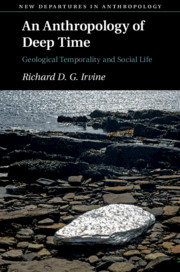Book contents
- An Anthropology of Deep Time
- New Departures in Anthropology
- An Anthropology of Deep Time
- Copyright page
- Epigraph
- Contents
- Acknowledgements
- Introduction
- ONE Time Depth
- TWO Time Travelling Pits and Migrant Rocks
- THREE Excluding Water
- FOUR The Problem with Presentism
- FIVE Mapping Deep Time
- SIX Geology and Biography
- SEVEN Enter Catastrophe
- EIGHT Wasteland
- References
- Index
SIX - Geology and Biography
Published online by Cambridge University Press: 04 May 2020
- An Anthropology of Deep Time
- New Departures in Anthropology
- An Anthropology of Deep Time
- Copyright page
- Epigraph
- Contents
- Acknowledgements
- Introduction
- ONE Time Depth
- TWO Time Travelling Pits and Migrant Rocks
- THREE Excluding Water
- FOUR The Problem with Presentism
- FIVE Mapping Deep Time
- SIX Geology and Biography
- SEVEN Enter Catastrophe
- EIGHT Wasteland
- References
- Index
Summary
Recognising that our maps of deep time are themselves products of the entangled relationship between the biographical and the geological, this chapter takes inspiration from the ‘biographical geology’ of the Scottish stonemason and geologist Hugh Miller. Turning our ethnographic focus to the Orkney Islands, where Miller hunted for fish fossils within the Old Red Sandstone, this chapter considers the ways in which deep time protrudes into the present. In particular, we consider the dynamics of erosion (and the role of concrete defences in holding the line against erosion) and the impact of the discovery of geological resources – particularly oil and uranium – as they shape people’s identity in relation to time and place.
- Type
- Chapter
- Information
- An Anthropology of Deep TimeGeological Temporality and Social Life, pp. 129 - 152Publisher: Cambridge University PressPrint publication year: 2020

